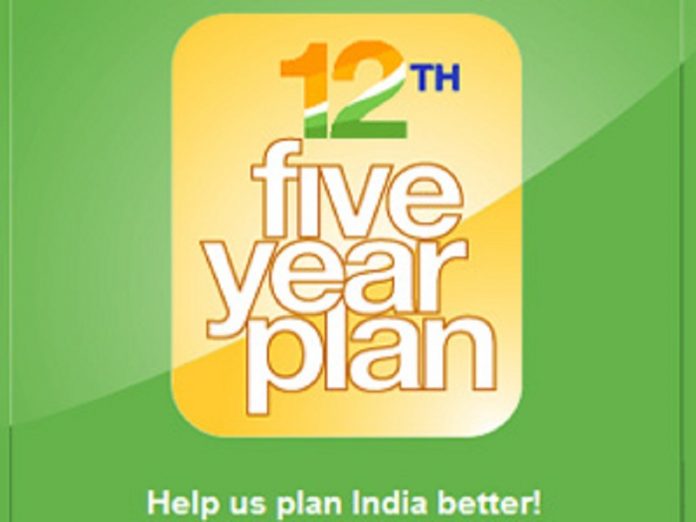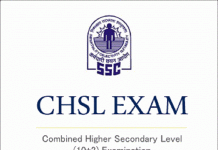Hello Sehpaathians,
Today, We are providing a Short Notes on “Five Year Plan ” of Economics Section. this topic is really very helpful for upcoming all Govt. Exam.
Five Year Plan : Since 1947, the Indian economy has been premised on the concept of planning. This has been carried through the Five-Year Plans, developed, executed, and monitored by the Planning Commission. With the Prime Minister as the ex-officio Chairman, the commission has a nominated Deputy Chairman, who holds the rank of a Cabinet Minister. Montek Singh Ahluwalia is the last Deputy Chairman of the Commission (resigned on 26 May 2014). The names of senior BJP leaders and former Union Ministers Yashwant Sinha and Arun Shourie are doing the rounds for the important position. There was speculation that the new BJP-led government would disband or scale down the Planning Commission after Prime Minister Narender Modi had made a scathing attack on the panel.The Eleventh Plan completed its term in March 2012 and the Twelfth Plan is currently underway.
1st Plan: 1951-56 :
- Priority giving to Agriculture and Irrigation.
- “Harrod Domar” growth model adopted.
- This is the only plan in which Prices Fell.
2nd Plan: 1956-61 :
- PC Mahalanobis prepared this Plan. Priority given to basic and heavy industries.
- Bhilai, Rourkela and Durgapur Steel Plants, ONGC, Ranchi Heavy Engg. Corporation, Neyveli Lignite Corporation,
Multi-purpose projects – Nagarjuna Sagar, Bhakra Nangal, Hirakud started during this Plan.
- Deficit financing started in this plan.
- “Socialist pattern of society” is accepted as a goal.
3rd Plan : 1961-66 :
- This plan was a failure. Food output fell, i.e., became negative.
- Bokaro Steel Plant in 1964.
- Sever drought in 100 years, occurred in 1965-66.
- China’s and Pakistan’s innovations.
- Rupee devalued in June 1966 (devaluation was first done in 1949).
DURING 1966-69: THREE ANNUAL PLANS, PLAN HOLIDAY
• Green Revolution in 1966 Kharif.
• 14 Banks nationalized in July 1969
4th Plan – Aim : 1969-74 :
- Poverty Removal, Growth with stability with distributive justice, self-reliance
- Gadgil Formula : It was followed since 4th plan for central assistance for state plans. This formula was modified by NDC in Dec. 1991 when Pranab Mukherjee was the Chairman of Planning Commission. Hence, it became Gadgil -Mukherjee formula since 8th Plan : “Planning from below”
- started from 4th Plan.
- “Garibi Hatao” slogan in 1971 Elections
- Privy purses were abolished in 4th Plan
5th Plan – Aim : 1974-79 :
- Poverty removal became distinct objective for the first time.
- DP Dhar drafted.
- “Minimum Needs Programme” launched.
- Command Area Development Programme was started in 1974-75 to utilise water in major and medium irrigation projects in an optimum manner.
- Oil crisis : 1973 Sept.
- 20 point programme replaced 5th plan discontinued 1 year in advance.
6th Plan: 1978-83 :
- Proposed by Janata Party but it was defeated in elections and could implement Rolling Plan for 2 years for 1978-80. Prof. DT Lakdawala was the Dy. Chairman, Planning Commission.
- The idea “Rolling Plan” was taken from Japan.
- “Rolling Plan” concept coined by Gunnar Myrdal.
- “Hindu rate of Growth” crossed from 5th plan. This concept was coined by Prof. Raj Krishna (Growth Rate 3% to 3.5%).
6th Plan: Aim 1980-85:
• Poverty eradication.
• IRDP, TRYSEM, NREP launched during this Plan.
• Visakhapatnam Steel Plant (Andhra Pradesh), Salem (TamilNadu) Bhadravathi Steel Plants were built.
7th Plan: 1985-90 :
- Food, Work, Productivity, “Jawahar Rozgar Yojana”launched in April 1989’.
- Vakil and Brahmananda’s wage good strategy adopted in the 7th Plan.
8th Plan : 1992-97 :
- Indicative planning : Based on the model of John.W.Muller.
- This plan achieved highest growth rate of 6.8%.
- “Indicative planning” implemented first in France in 1947–50.
9th Plan – Aim : 1997-2002
- Human resources development, growth with social justice and equality agricultural rural development, important role to private sector.
10th Plan: 2002-07 :
- Growth rate target 87%, achieved 7.8%
- Highest in the entire planning era : 5 crore employment, largest allocation to energy.
11th Plan : 2007-12:
- Theme : “Faster and more Inclusive Growth”
- Total proposed outlay : ` 36,44,718 Crores (doubled)
- Union Government ` 21,56,571 Crores (59.2%).
- States ` 14,88,147 Crores (40.8%).
- Approach paper to 11th Plan approved by the Planning Commission on 18-10-2006.
- 52nd National Development Council approved the Draft Plan on 09-12-2006.
- 54th National Development Council approved in its meeting on 19-12-2007
- 55th National Development council meet held on 24-07-2010.
- Central Gross Budgetary Support. ` 14,21,711 Crores.
- This is centre’s support to plan.
- Midterm Review of the 11th plan is done by Planning Commission on 23-03-2010, and the 11th plan growth target is reduced from 9% to 8.1%. (It projects the growth rate for 20-09-10, 20-10-11, 20-11-12 as 7.2%, 8.5% and 9% respectively. Also to increase the outlay on infrastructure sector from the present $ 500 billion in 11th Plan to $ 1 Trillion in 12th Plan).
12th Plan : 2012-17 :
- This plan’s focus is on instilling “inclusive growth”.
- The plan is concentrated to encourages the development of India’s agriculture, education, health and social welfare through government spending.
- It is also expected to create employment through developing India’s manufacturing sector and move the nation higher up the value chain.
- Our PM Narendar Modi, however, warned that maintaining fiscal discipline is important as well.





















